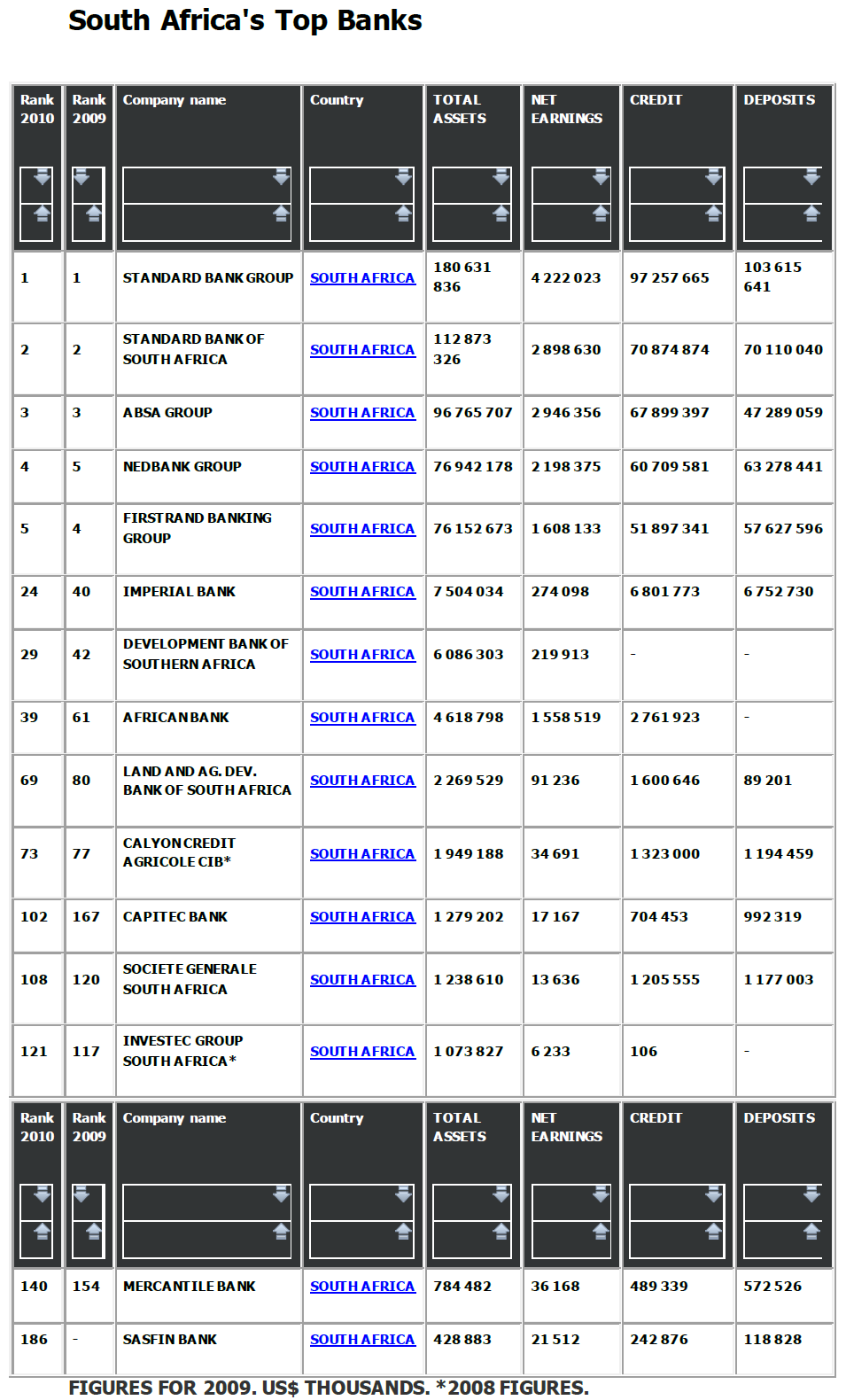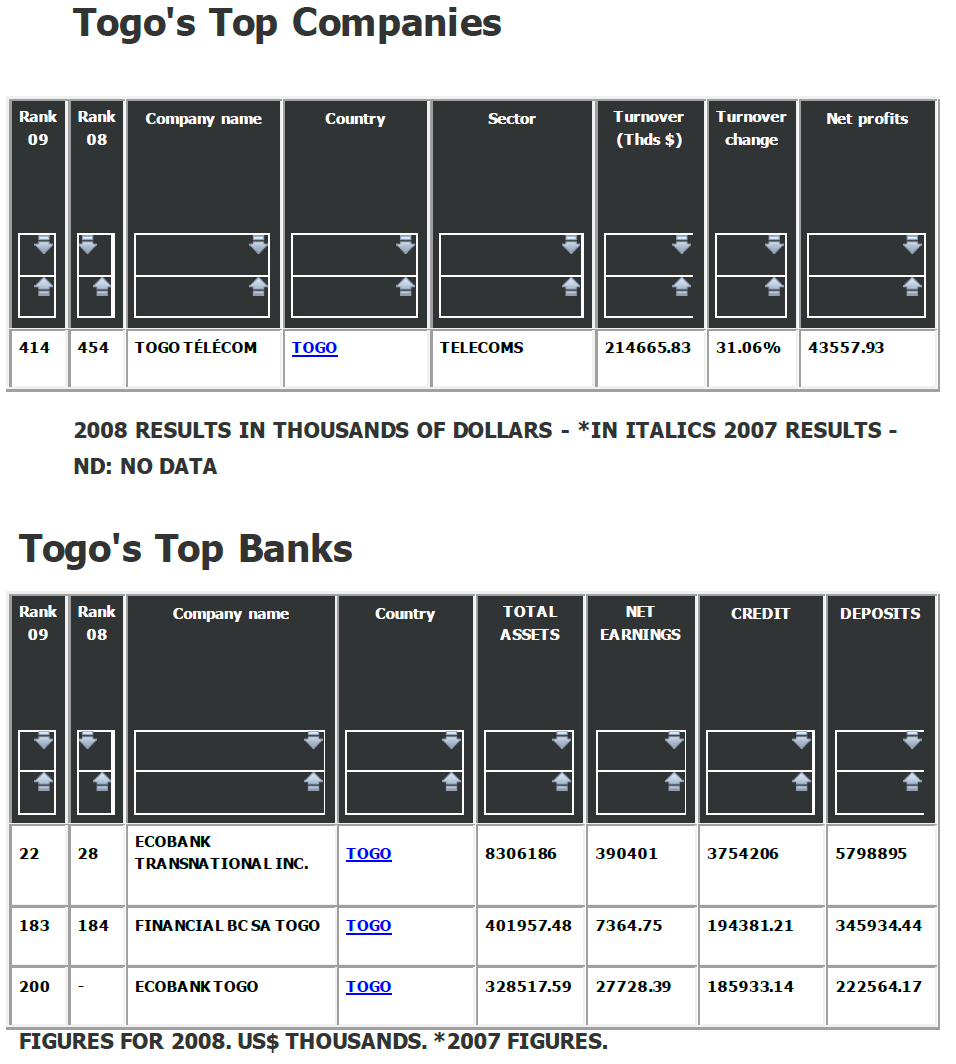7.1. Bibliography
Amadife, E. N. and Warhola, J. W., (1993). “Africa’s political boundaries: colonial cartography, the OAU, and the advisability of ethno-national adjustment.”
International Journal of Politics, Culture, and Society, Vol. 6, N4, P 553-554.
Amit, R. and Schoemaker, P. J., (1993). “Strategic assets and organisational rent”, Strategic Management Journal Vol. 14, P 33 -41.
Barney, J.B., (1991). “Firm resources and sustained competitive advantage”, Journal of Management Vol.17, Issue 1, P 99–120.
Baskaran, T., (2011). “Fiscal Capcity and Government Accountability in Sub-Saharan Africa”, Working Papers in Economics, The University of Michigan.
Bell, J., (2005). “Doing your research project a guide for First-Time Researchers in Education”, Health and Social Science, Maindenhead: Open University Press.
Cantwell, J., (1994). “The Relationship Between International Trade and International Production,” D. Greenaway and Winters, L.A., Surveys in International Trade. Oxford: Basil Blackwell.
Caprio, G.; Laeven, L. and Levine, R., (2004). “Governance and bank valuation”, Policy Research Working Paper #3202. The World Bank.
Cattaneo, D.; Engman, M.; Saez, S. and Sterm, R.M., (2010). “International Trade in Services: New Trends and Opportunities for Developing Country”, Working Papers, Research Seminar in International Economics, The University of Michigan.
Caves, R.E., (1971). “International corporations: The industrial economics of foreign investment”, Backwell Publishing on behalf of The School of Economics and
Political Science, Economica, New Series, Vol. 38, N 149 P 1-27
Coffrey, A. and Atkinson, P., (1996). “Making Sense of Qualitative data: Complementary research strategies”, Sage Publications.
Coffrey, W. M. and Levinthal, D. A., (1990). “Absorptive Capacity: A new perspective on learning and innovation”, Administrative Science Quarterly, Vol. 35, P 128 -152.
Cohen, L.; Manion, L. and Morrison, K., (2007). “Research Methods in Education”, 6th Edition, Routledge.
Collier, P. (2007), “The Bottom Billion”, New York: Oxford University Press, 2007, P 224.
Conner, K.R., (1991). “A Historical Comparison of Resource-Based View and Five Schools of Thought within Industrial Organization Economics: Do We Have a New
Theory of the Firm?” Journal of Management; 17, (1), pp. 121–154
Conner, K.R. and Prahalad, C.K. (1996). “A Resource-Based Theory of the Firm: Knowledge versus Opportunism”, Organization Science; 7, (5), pp. 477–501
Creswell, J. W., (1994). “Research Design: Qualitative and Quantitative Approaches”, Sage Publications.
Crick, D.; Kaganda, G. E. and Matlay, H. , (2011). “A Study into the International Competiveness of low and High intensity Tanzanian exporting SMEs”, Journal of Small Business and Enterprise development, Vol. 18, Issue 3, P 594 – 607.
Culler, J., (1997). “Literature theory: A very short introduction”, Oxford University Press, New-York, Chapter 1.
David Dollar, “Globalization, Inequality, and Poverty since 1980”, World Bank mimeo, 2001.
Davis, K. A., (2011). “Critical Qualitative Research in Second Language Studies: Agency And Advocacy”, Library of Congress cataloguing-in-Publications Data.
Day, G. S. and Prakesh, N., (1994). “Managerial Representations of Competitive Advantage.”, Journal of Marketing 58 (April): 31-44.
Day, G. S., (1994a). “Continuous Learning about Markets.”, California Management Review (Summer): 9-31.
Day, G. S., (1994b). “The Capabilities of Market-Driven Organizations.”, Journal of Marketing 58 (October): 37-52.
DeGennaro, R. P., (2005-12). “Market Imperfections”, Working Paper. Federal Reserve Bank of Atlanta – Working Paper Series. Retrieved 2009-03-17
Dierickx, I.; Cool, K. (1989). “Asset Stock Accumulation and Sustainability of Competitive Advantage”, Management Science; 35, (12), pp. 1504–1511.
Dollar, D. and Kraay, A., (2001). “Trade, Growth, and Poverty”, World Bank memo.
Dunning, J.H., (2003). “The contribution of Edith Penrose to international business scholarship”, Management International Review 43 1.
Dunning J. H.; Van Hoesel R. and Narula R., (1997). “Third World Multinationals Revisited: New Developments and Theoretical Implications”, in Discussion Papers
in International Investment and Management Series B, No. 227, University of Reading.
Dunning, J.H., (1988). “The eclectic paradigm of international production”, Journal of International Business Studies 19, P. 1–31.
Dunning J. H., (1986). “The investment development cycle and Third World multinationals”, in Khan K. M., (ed.), Multinationals from the South: New Actors in
the International Economy, Printer Publishers: London.
Egger, M.; Smith, G. D. and Altman, D., (2001). “Rationale, potentials, and promise of Systematic reviews”, 2nd Ed. London: Kogan Page.
Eisenhardt, K. M., (1989). “Building Theories from a Case Study Research”, The Academy of Management Review, Vol. 4, N 4, P 532 -550.
Esteve-Perez, S.; Gil-Pereja, S.; Llorca-Vivero, R. and Martinez-Serrano, J. A., (2011). “The Impact of the Euro on Firm Export Behaviour: does firm size matter?”, Oxford University Papers, Vol. 63, Issue 2, P 355 – 375.
Fiol, C. M. and Lyles, M. A., (1985). “Organizational Learning.” Academy of Management Review, Vol. 10, issue 4, P 803-813.
Frigg, R. and Weiss, J., (2009). “Models in Science”, The Stanford Encyclopedia of Philosophy (Summer 2009 Edition).
Goyal, S. A., (2009). “Connections: an introduction to the economics of networks”, Princeton University Press.
Grindle, M. S., (2004). “Good Enough Governance: Poverty Reduction and Reform in Developing Countries”, Governance, Vol. 17, P 525–548. doi: 10.1111/j.0952-
1895.2004.00256.x
Hitt, A., (2009), “Strategic Management Competitiveness and Globalisation”, Nelson Education LTD.
Hitt, M.A., Hoskisson, R.E. and Kim, H., (1997). “International diversification: effects on innovation and firm performance in product-diversified firms”, Academy of Management Journal, Vol. 40, Issue 4, P 767-79.
Hoaglin, D.C.; Light, R.J.; McPeek, B.; Mosteller, F. and Stoto, M., (1982). “Data for Decisions: Information Strategies for Policymakers”, Cambridge, MA : Abt Books.
Hoffmann, N.P., (2000). “An examination of the Sustainable Competitive Advantage concept: Past, Present, and Future”, Academy of Marketing Science Review, Vol.
2000,N4.
Hoopes, D.G.; Madsen, T.L. and Walker, G., (2003). “Guest Editors’ Introduction to the Special Issue: Why is There a Resource-Based View? Toward a Theory of
Competitive Heterogeneity”, Strategic Management Journal, Vol. 24, P 889–902.
Hyden, G., (2003). “Experiences of Political Reform in Africa: Lessons for the Future”, Bureau of international Cooperation, HongKong Maco and Taiwan Academic
Affairs Office Chinese Academic of Social Sciences, 2003.3.10.
Hymer, S.H., (1976). “The international operations of national firms: A study of foreign direct investment”, MIT Press, Cambridge, MA.
Klein, J., (2001). “A Critique of Competitive Advantage”, Critical Management Studies Conference, July 2001 Manchester.
Kogut, B. And Zanger, U., (1993). “Knowledge of the firm and the evolutionary theory of the multinational corporation.”, Journal of International Business Studies, Vol. 24, Issue 4, P 625-645.
Kohli, A. K. and Jaworski, B. J., (1990). “Market Orientation: The Construct, Research, Propositions, and Managerial Implications.”, Journal of Marketing, Vol. 54, P 1-18.
Krugman, P. R., (1998). “It’s Baaack: Japan’s Slump and the Return of the Liquidity Trap”, Brookings Papers on Economic Activity, Vol. 1998, No. 2, P 137-205
Kumar K. and Lim K. Y., (1984), “The Korean manufacturing multinationals”, Journal of International Business Studies, Vol. 15, Issue 2, P 45-61
Lippman, S. A. and Rumelt, R. P., (1982). “Uncertain imitability: An analysis of interfirm differences in efficiency under competition.”, Bell Journal of Economics. 13 (Autumn): P 418-438.
Lu, J. W., and Beamish, P. W. (2004). “International diversification and firm performance: The S-curve hypothesis”, Academy of Management Journal, Vol. 47,
Issue 4, P 598–609.
Ma, H., (2000). “Of Competitive Advantage: kinetic and Positional”, Business Horizons, Vol. 43, Issue 1, P 53 -64.
Mahoney, J. T. and Pandian, J. R., (1992). “The resource-based view within the conversation of strategic management.”, Strategic Management Journal. Vol. 13,
P 363-380.
Makadok, R., (2001), “Toward a Synthesis of the Resource-Based View and Dynamic Views of Rent Creation”, Strategic Management Journal, Vol. 22, Issue 5, P 387-
401.
Montgomery C., “Resources: The Essence of corporate Advantage”, Harvard Business School, Case Note: 792-064.
O’Sullivan, A. and Sheffrin, S. (2003). “Microeconomics: Principles and Tools”, Upper Saddle River, NJ: Prentice Hall.
Penrose, E.T., (1995). “The theory of the growth of the firm”, Oxford University Press, 3rd Ed., Oxford [first published in 1959].
Peteraf, M. A., (1993). “The cornerstones of competitive advantage: A resource-based view.”, Strategic Management, Journal. Vol. 14, P 179-191.
Pitelis, C.N., (2002). “The growth of the firm; the legacy of Edith Penrose”, Oxford University Press, Oxford.
Porter, M., (1990). “The Competitive Advantage of nations”, The Macmillan Press LTD.
Prado, M., (2002). “Government policy in the formal and informal sectors”, European Economic review, Vol. 55, Issue 8, P 1120–1136.
Prunier, G., (2009) “Africa’s World War: Congo, the Rwanda genocide, and the making of a continental catastrophe”, Oxford University Press.
Rugman, A.M. and Verbeke, A., (2003). “Extending the theory of the multinational enterprise: internalization and strategic management perspectives,” Journal of
International Business Studies, Palgrave Macmillan Journals, vol. 34(2), P 125-137, March.
Rugman, A.M. and Verbeke, A., (2002). “Edith Penrose’s contribution to the resource based view of strategic management”, Strategic Management Journal, Vol. 23, P 69–78.
Rumelt, R.P., (1994). “Towards a strategic theory of the firm”. In “Competitive Strategic Management”. Ed. Richard B. Lamb, Engelwodd Cliffs, NJ: Prentice-Hall, P 566 -570.
Sandini, G.; Tistarelli, M, and Vernon, D., (1988). “A Pyramid Based Environment for the Development of Computer Vision Applications”, IEEE International Workshop on Intelligent Robots and Systems, Tokyo.
Spence, J.E., (1994). “Change in South Africa”, Chatham House Papers, The Royal Institute of International Affairs, Printer Publishers Limited.
Stake, R. E., (1995). “The Art of Case Study Research”, Sage Publications.
Stalk, G., Evans, P. and Shulman, L.E. (1992). “Competing on Capabilities: The New Rules of Corporate Strategy”, Harvard Business School, March-April 1992.
Teece, D. J., Pisano, G., Shuen, Amy., (1997). “Dynamic Capabilities and Strategic Management”, Strategic Management Journal, Vol. 18, Issue 7, P 509- 533.
Teece, D.J. (1980). “Economies of scope and the scope of the enterprise”, Journal of Economic Behavior and Organization, Vol. 1, P 223-247.
Tolentino, P. E., (2007). “Explaining the competitiveness of multinationals companies of developing economic: Critical review of the academic literature”, International Journal of Technology and Globalisation, Vol. 4, Issue 1.
Varadarajan, P. Rajan and Satish Jayachandran. (1999). “Marketing Strategy: An Assessment of the State of the Filed and Outlook.” Journal of the Academy of
Marketing Science, Vol. 27, Issue 2, P 120-143.
Vatiero M. (2009), “An Institutionalist Explanation of Market Dominances”, World Competition. Law and Economics Review, Vol. 32, Issue 2, P 221-6.
Wells L. T., Jr., (1981), “Foreign investors from the Third World” in Kumar K., and McLeod M. G., (eds.), Multinationals from Developing Countries, D. C. Heath, Lexington: Massachusetts.
Wernerfelt, B., (1984). “A resource-based view of the firm”. Strategic Management Journal 5, pp. 171–180.
Von Kirchback, F. (2003). “A Country’s Competitive Advantage”, International Trade Centre, International Trade Forum, Issue 1-2003.
Yin, R. K., (2003). “Case Study Research: Design and Methods”, 3rd ed, Vol. 5, Thousand Oaks, CA: Sage Publications.
Yin, R. K., (2009). “Case Study Research: Design and Methods”, 4th ed, Vol. 5, Thousand Oaks, CA: Sage Publications.
Young, O. R., (1989). “International coperation: building regimes for natural resources and the environment”, Cornell University Press.
African Economic Outlook (2011). “Africa and its Emerging Partners”, http://www.uneca.org/eca_resources/Publications/books/aeo2011/ENAEO2011_Summary.pdf, Date accessed: 17.07.2011.
African Partnership Forum, (2007). “Climate Change and Africa”, http://www.africapartnershipforum.org/dataoecd/57/7/38897900.pdf, Date accessed: 27.08.2011.
African Union Commission, (2009). “Strategic Plan 2009-2012”, http://www.au.int/en/sites/default/files/Strategic_Plan2009-2012.pdf, Date accessed: 27.08.2011.
Boston Consulting Group, (2010). “The African Challengers: global competitors emerge from the overlooked continent.” http://www.bcg.com/documents/file44610.pdf, Date accessed: 25.11.2010.
Economic Commisssion for Africa, (1999). “Assessing regional integration in Africa.”, WTO, United Nation Publications, Vol. 1. Date accessed: 26.08.2011.
Internet Archives, On Openlibrary.org, History of the standard bank of South Africa LTD., 1862-1913.
http://www.archive.org/stream/historyofstandar00amphuoft#page/5/mode/1up, date accessed: 30/09/2011.
National Democratic Institute, (2007). “Transparency and Accountability in Africa’s Extractive Industries: The Role of the Legislature”,
http://www.ndi.org/files/2191_extractive_080807.pdf, Date accessed: 27.08.2011.
World Development Report, (2007). “Development and the Next Generation”, The World Bank, Data and Research, http://go.worldbank.org/L889ZRIN20, Date
accessed: 27.08.2011.
World Development Report, (2010). “The global competitiveness”, The World Bank, Data and Research, http://www3.weforum.org/docs/WEF_GlobalCompetitivenessReport_2010-11.pdf, Date accessed: 27.08.2011.
World Economic Forum (2010) “The Global competitiveness report 2010-2011″, http://www3.weforum.org/docs/WEF_GlobalCompetitivenessReport_2010-11.pdf
http://africaunchained.blogspot.com/2010/04/defining-missing-middle.html, date accessed: 30/09/2011.
http://heritagearchives.rbs.com/wiki/British_Overseas_Bank_Ltd,_London,_1919-62, date accessed: 30/09/2011.
http://www.ecobank.com/upload/20110914074034633206gaJ3qNa4R.pdf, date accessed: 30/09/2011.
http://www.fin24.com/Money/Money-Clinic/SAs-most-expensive-bank-20100927-2, date accessed: 30/09/2011.
http://www.huffingtonpost.com/j-skyler-fernandes/investing-in-africadefin_b_534767.html, date accessed: 30/09/2011.
http://www.ifad.org/remittances/pub/money_africa_f.pdf, date accessed: 30/09/2011.
http://www.nmm.ac.uk/freedom/viewTheme.cfm/theme/triangular, date accessed: 30/09/2011.
http://www.theafricareport.com/, date accessed: 30/09/2011.
7.2. Appendices
7.2.1. BGC Report
7.2.2. Top 200 Banks in Africa
7.2.3. South African Top Banks
7.2.4. Togo top companies and Banks




